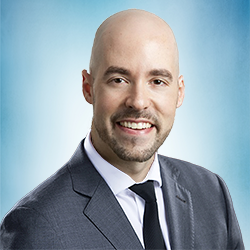Pain Medications
• Antidepressants
• Anti-Seizure Medications
• Muscle Relaxants
• NSAIDs
• Steroids
Regenerative Therapies
• PRP Therapy
• Stem Cell Therapy
Complementary Therapies
• Whole Medicine Systems
• Mind-Body Medicine
• Biologically Based Therapies
• Manipulative Body-Based Therapies
Pain Medications & Therapies
Pain medications, therapy or a combination of both practices can help manage minor to chronic pain. DOC has board certified Pain Medicine Physicians to recommend the proper treatment plan for you and your pain. Find more information on common pain management medications and therapies utilized in the treatment of pain and contact Direct Orthopedic Care to start on the road to recovery.
Pain Medications
One of the many treatment options a pain management specialist will use to treat pain is medication management.
DOC’s highly trained pain management specialists may recommend and prescribe pain medications in combination with other complementary therapies to help guests find pain relief from injuries, chronic conditions and disease.

Antidepressants
Whether or not a person is depressed, their pain can be relieved with certain antidepressant medications. By increasing levels of brain neurotransmitters, such as serotonin and norepinephrine, antidepressants may reduce pain signals.
Antidepressant medications can relieve pain for conditions such as:
- Arthritis
- Fibromyalgia
- Neck and back pain
- Pelvic pain
- Headaches
- Neuropathy
Anti-Seizure Medications
Medications that prevent seizures can also help with certain pain conditions. One of the theories about their effectiveness is that they reduce the amount of pain signals transmitted by nerves.
They can help relieve pain for the following conditions:
- Fibromyalgia
- Neuropathy
- Radiculopathy
- Sciatica
- Headaches
- Neck and back pain
Muscle Relaxants
Muscle relaxants can be used to treat symptoms of pain and discomfort by relieving muscle spasms.
Muscle spasms can be caused by multiple issues including:
- Fibromyalgia
- Bone fracture
- Strain or sprain
- Autoimmune disease
- Injuries
- Arthritis
NSAIDs (Non-Steroidal Anti-Inflammatory Drugs)
NSAIDs are a class of drugs that have pain relieving, anti-fever, and anti-inflammatory properties. NSAIDs can provide guests with significant relief of inflammation and mild to moderate pain. These drugs include Advil, aspirin, Aleve, Celebrex, ibuprofen, Motrin, and many more.
Some of the most common conditions treated with NSAIDs include:
- Arthritis
- Injuries from sports or other activities
- Neck and back pain
- Headaches
Steroids
Steroids (specifically corticosteroids) are widely used to treat pain conditions. Pain management specialists strategically place steroids via injections in areas that are causing pain.
Corticosteroids are used by pain management specialists to treat a wide variety of conditions:
- Neck and low back pain
- Arthritis
- Tendonitis
- Nerve pain
At DOC, the guest’s pain management specialists will consider medication management that is appropriate for his or her condition.
Regenerative Therapies for Pain
Regenerative medicine therapies are exciting new treatment options that can jump-start the body’s natural healing processes and relieve pain. Pain is thought to be an indicator of tissue damage or an underlying injury. Regenerative medicine therapies can target the underlying problem and promote the body’s natural healing processes. For many guests, it can help them get their life back. Regenerative medicine therapies include platelet-rich plasma (PRP) and stem cell therapies.
Regenerative medicine therapies may be used to treat:
- Arthritis
- Bone fractures
- Cartilage damage
- Chronic pain
- Ligament tears
- Sports and overuse injuries
- Surgical wounds
- Tendonitis
Benefits of regenerative medicine therapy include:
- Minimally invasive therapy
- Shortens recovery time
- Improves joint, ligament, and tendon function
- Does not require a significant incision or cause trauma to the area
- Does not require general anesthesia
- Has a low side effect profile
- Has minimal risk of allergy or adverse reactions
There is evidence that regenerative medicine therapies can benefit a wide variety of chronic pain conditions, but as with other therapies, there are people whose pain will not response to this treatment approach. DOC’s pain management specialist will consult with the guest to determine which treatment protocol is appropriate for the guest’s unique health profile, condition, and chronic pain situation.
PRP Therapy
PRP therapy uses a person’s own blood to help heal his or her injuries. A small sample of blood is placed into a machine called a centrifuge that separates platelets from red blood cells, leaving super-concentrated platelets rich in healing properties. These concentrated platelets are then injected into the injured area to promote healing and regeneration of injured tissue, leading to reduced pain and increased function.
Stem Cell Therapy
Stem cell therapy also helps to heal degenerative conditions, such as arthritis, that lead to pain. Stem cells are harvested from a person’s bone marrow. These cells are injected into damaged or degenerative tissues and joints. Stem cells have the miraculous ability to change into any cell type, including cartilage, ligament, or tendon tissue. As stem cells regenerate into new tissue, they can hasten healing, which can significantly reduce pain.
Complementary Pain Relief Therapies
DOC pain management specialists and orthopedic surgeons may incorporate complementary methods for pain relief to supplement conventional medicine. Complementary pain relieving methods for chronic conditions or injuries are divided into four categories.
Whole Medicine Systems
Acupuncture combined with traditional pain relief methods may be helpful for some types of chronic pain. Acupuncture points are areas of the skin that contain large amounts of intersecting nerve endings that connect to muscles or bones. Some scientists believe that these “acupoints” possess special electrical characteristics that can be manipulated using painless, hair-thin needles, causing the body to release natural painkillers, also called endorphins.
Homeopathy, naturopathic medicine, Ayurveda, and Native American herbalism focus on natural, holistic approaches to wellness, balancing mind, body, and spirit to support the body’s ability to heal itself.
Mind-Body Medicine
Mind-body techniques include meditation, mindfulness, and breathing exercises to help restore a sense of control over the body.
Tai chi and qi gong are centuries-old, mind and body practices. They involve certain postures and gentle movements with mental focus, breathing, and relaxation.
Yoga incorporates breath control, meditation, and gentle movements to stretch and strengthen muscles. Studies have shown that they can help people manage pain from headaches to arthritis to lingering injuries.
Psychological methods, relaxation techniques, guided imagery, and medical hypnosis can reduce the need for medication. The goal is to produce the body’s natural relaxation response, characterized by slower breathing, lower blood pressure, and a feeling of increased wellbeing.
Biofeedback involves learning relaxation and breathing exercise with the help of a biofeedback machine, which turns data on heart rate, blood pressure, and other physiological functions into visual cues. The visualizations allow the guest to have control over his or her body’s response to pain.
Biologically Based Interventions
Nutrition therapy, including supplements and dietary changes, is an approach to restore health and relieve pain.
Manipulative Body-Based Practices and Therapies
Therapeutic massage eases pain by working tension out of muscles and joints, relieving stress and anxiety, and distracting from pain by introducing a competing sensation that overrides pain signals.
Chiropractic care places emphasis on the body’s ability to heal itself by conservative and natural treatment methods, particularly manipulation therapy, to help correct the internal structural alignment of the body.
Transcutaneous Electrical Nerve Stimulation (TENS) uses a special device that transmits low-level electrical charges into the area of the body that is in pain. Studies have found that TENS is useful in easing pain after surgery, pain related to injuries, and may also be helpful for chronic pain conditions, such as neck pain.
Physical therapy is one of the best treatments in the fight against pain. DOC physical therapists guide the guest through a series of exercises designed to preserve or improve strength and mobility.
Whether a guest’s pain is the result of a chronic condition, injury, or surgery, DOC’s pain management specialists will customize a plan to control pain with conventional and complementary methods, which may include DOC physical therapy.
Pain Management Physicians
A pain management specialist provides care using a multidisciplinary approach. This treatment uses a combination of interventional procedures, physical therapy, psychological therapy, and medications.
Pain management physicians have special training in the evaluation, diagnosis, and treatment of all different types of pain.
The accepted standard for pain management education is a fellowship in pain management. The fellowship consists of at least one year of training in all aspects of pain management after completion of residency training. Most fellowship programs are associated with anesthesiology residency programs. When a physician has become board certified in their primary specialty and has completed an accredited fellowship, he or she becomes eligible for subspecialty board certification in pain medicine by the American Board of Anesthesiology, the American Board of Psychiatry and the American Board of Neurology, or the American Board of Physical Medicine and Rehabilitation.



